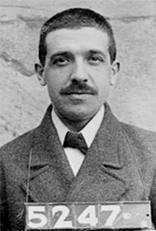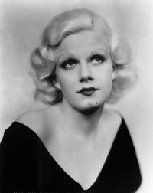Good 34º patchy fog morning.
Yesterday we topped at 44º.
Picture of the Day
Interesting about high chairs............
A high chair is a piece of furniture used for feeding older babies and younger toddlers. The seat is raised a fair distance from the ground, so that a person of adult height may spoon-feed the child comfortably from a standing position (hence the name). It often has a wide base to increase stability. There is a tray which is attached to the arms of the high chair, which allows the adult to place the food on it for either the child to pick up and eat or for the food to be spoon-fed to them.
A booster chair is meant to be used with a regular chair to boost the height of a child sufficiently. Some boosters are a simple monolithic piece of plastic. Others are more complex and are designed to fold up and include a detachable tray.
Rarely, a chair can be suspended from the edge of the table avoiding the need for an adult chair or a high chair.
^wooden high chair 1935
There are five main high chair designs:
- Standard - Also known as traditional or classic high chairs, these are just raised seats. They may or may not come with a harness or table.
- Convertible - These modular high chairs, also called grow-with-me high chairs, are designed to be both multifunctional and useful past infancy. The first examples of these date back to the 19th century, which were high chairs that could transform into strollers and rocking chairs. These chairs can be easily disassembled and adjusted to fit a child as they grow, often converting into either booster chairs for toddlers or standalone full-size chairs that can be used by adults.
- Foldable - Foldable high chairs collapse flat for easy transportation and storage.
- Portable - Like a foldable high chair, portable or travel high chairs are designed for transportation. They are made with lightweight materials that are usually fabric or plastic.
- Hook On - Space-saver high chairs either attach to the side of the table with clamps or are large booster seats with a detachable table.
High chairs can result in child-related accidents.
From Mr. Food
Spice up your life with our simple-to-make and absolutely delicious Southwestern Chicken Melt. We promise that everyone in your house will be begging for seconds, so don't forget to make extra!
- 4 boneless, skinless chicken breasts
- 1/2 teaspoon salt
- 1/4 teaspoon black pepper
- 1/4 cup barbecue sauce
- 4 slices crispy cooked bacon, crumbled
- 1/2 cup shredded colby-jack cheese
- 1/4 cup diced tomatoes
- 2 tablespoons sliced scallions
- Coat a grill pan or skillet with cooking spray and heat over medium heat.
- Sprinkle chicken with salt and pepper and cook 6 to 8 minutes per side, or until no longer pink in center. Evenly top each chicken breast with barbecue sauce, bacon, and cheese. Cover and heat 2 to 3 additional minutes, or until cheese is melted.
- Remove to platter, top each chicken breast with tomatoes and scallions, and serve.
***Serve with white rice and black beans.
Historically this date...
2005 – Steve Fossett becomes the first person to fly an airplane non-stop around the world solo without refueling.
And births this date include....
... ah ha! the ponzi scheme!
All I know. Nuff said. Have a good Friday. Ciao.
xo Sue Mom Bobo
National Anthem Day commemorates the day the United States adopted “The Star Spangled Banner” as its National Anthem. Written by Francis Scott Key, the “Star Spangled Banner” became the National Anthem in 1931.
Oh Say Can You See Fort McHenry
The story behind “The Star Spangled Banner” is as moving as the anthem itself. While an attorney, Key was serving in the Georgetown Light Field Artillery during the War of 1812. In 1814, his negotiation skills as a lawyer were called upon to release Dr. William Beane, a prisoner on the British naval ship, Tonnant. Early in September, Key traveled to Baltimore in the company of Colonel John Skinner to begin negotiations.
While Key and Skinner secured Beane’s release, the British navy had begun attacking Baltimore. The trio waited at sea to return to Georgetown.
Fort McHenry is built on a peninsula of the Patapsco River. Just across the Northwest Branch is the city of Baltimore. In 1814, the population of Baltimore was roughly 50,000 people, hardly the metropolis it is today. The country itself was still young, and often families of soldiers lived nearby, providing support to their soldiers.
The Rocket’s Red Glare
The British navy abandoned Baltimore and turned their full attention to Fort McHenry on September 13th. As the 190-pound shells began to shake the fort, mother nature brought a storm of her own. Thunder and rain pelted the shore along with the bombs and shells. Throughout the night, parents, wives, and children in their homes could hear and feel the bomb blasts across the way. There were reports of the explosions being felt as far away as Philadelphia. It was a long night of fear, worry, and providing comfort to one another.
At sea, Key had a similar night. Being a religious man, one who believed the war could have been avoided, he watched the bombs bursting in air over the water and steadily pummeling Fort McHenry. It was undoubtedly a sight to behold.
For 25 hours, the star-shaped fort manned by approximately 1,000 American soldiers endured over 1,500 cannon shots. The Fort answered with their own with almost no effect.
Does that Star-Spangled Banner Yet Wave
In the early morning of September 14th, after Major George Armistead’s troops stopped the British landing party in a blaze of gunfire, the major ordered the oversized American flag raised in all its glory over Fort McHenry. Sewn a few months before by Mary Pickersgill and her daughter, the enormous banner replaced the storm flag, which had flown during battle.
As Key waited at sea for dawn to break and smoke to clear, imagine the inspiring sight in the silence of the morning to see his country’s flag fully unfurled against the breaking of the day and the fort standing firm.
Key was so moved by the experience he immediately began penning the lyrics to a song which were later published by his brother-in-law as a poem titled “Defence of Fort M’Henry.”
HOW TO OBSERVE
Sing the Star Spangled Banner. Did you know there are three more verses to the original song? As a challenge, try learning them all.
NATIONAL ANTHEM DAY HISTORY
Nearly 117 years passed after Key penned “Defence of Fort M’Henry” before it became the national anthem of the United States of America. “Hail Columbia” and “My Country’ Tis of Thee” held honorary places as patriotic songs. But, the United States didn’t have an officially declared anthem until a congressional resolution, signed by President Herbert Hoover, until “The Star Spangled Banner” became the national anthem of the United States of America on March 3rd, 1931.
*Historical note: The spelling of “defence” in the original title of Key’s song is correct for the period.










